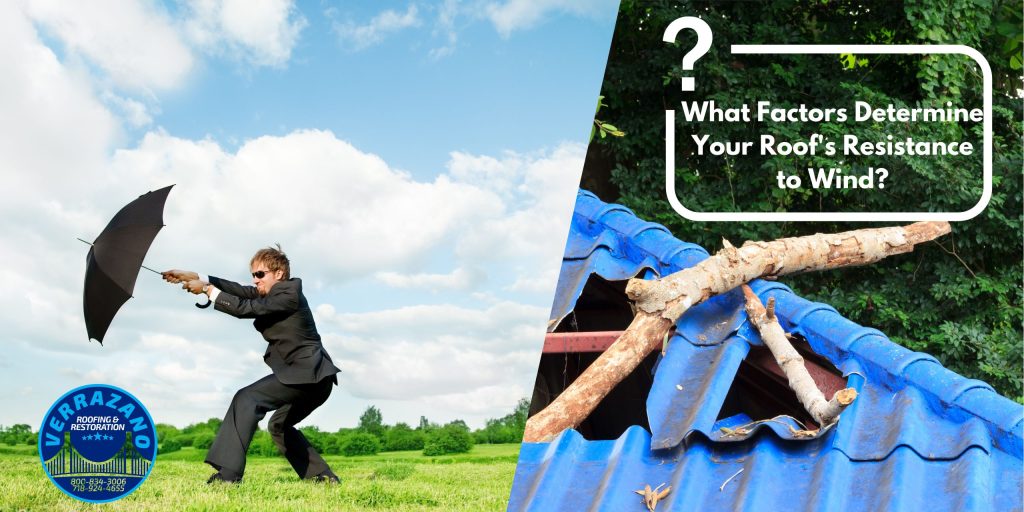What Factors Determine Your Roof’s Resistance to Wind?

When it comes to safeguarding your home against the elements, your roof plays a critical role in providing protection and structural integrity, especially during high winds. Understanding the factors that contribute to your roof’s resistance to wind can help you make informed decisions about its maintenance and durability.
1- Roofing Material:
The type of material used in your roof greatly influences its ability to withstand wind forces. Asphalt shingles, for example, are commonly used in residential roofing and offer varying levels of wind resistance depending on their quality and installation. Metal roofs are known for their durability and can provide excellent resistance to wind uplift due to their interlocking panels. Additionally, clay or concrete tiles are heavy and sturdy, making them less susceptible to wind damage when properly installed.
2- Roof Design and Construction:
The design and construction of your roof also play a significant role in its ability to withstand high winds. Roof pitch, shape, and slope can impact wind resistance, with steep-sloped roofs typically offering better performance than flat or low-sloped roofs. Additionally, the quality of installation, including proper attachment of roofing materials, flashing, and underpayment, is crucial for enhancing wind resistance. Reinforcing roof-to-wall connections and securing roof edges and overhangs can further bolster your roof’s ability to withstand wind forces.
3- Local Climate and Building Codes:
The wind resistance of your roof should be tailored to the specific climatic conditions of your area. Local building codes typically dictate minimum standards for roof design and construction to ensure adequate wind resistance. Understanding the wind zone and exposure category of your location can help you choose appropriate roofing materials and installation techniques to meet or exceed these requirements. Regular inspections and maintenance are also essential to identify any vulnerabilities and address them promptly, ensuring your roof remains resilient against wind damage over time.
In conclusion, several factors determine your roof’s resistance to wind, including the choice of roofing material, design and construction, and adherence to local building codes. By investing in quality materials, proper installation, and regular maintenance, you can enhance your roof’s ability to withstand high winds and protect your home against potential damage.


